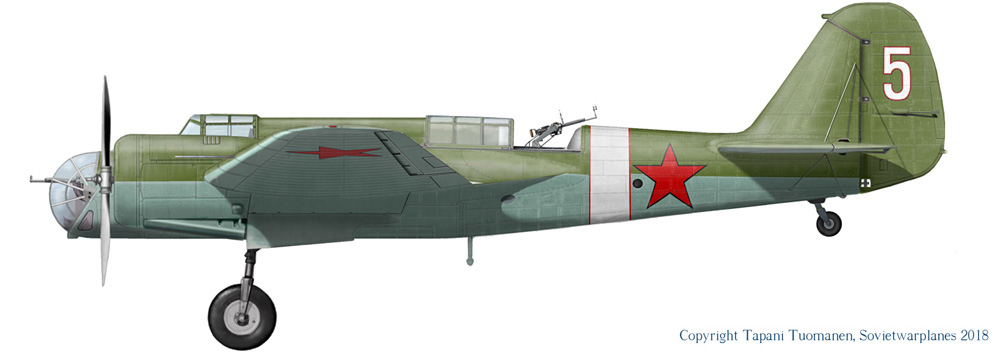The combat planes built between June 1940 and July 1941 conformed to a new painting standard, with gloss grass green A-19f uppersurfaces and gloss light blue A-18f undersurfaces.
The prop blades continued to be left unpainted aluminum on their front face, with the rear face partially painted black.
Part of the existing planes had to be repainted in green on their uppersurfaces, sometimes leaving the undersurfaces of the previous color, grey or silver.
Sometimes they were updated with the addition of an MV-3 dorsal turret, of a radio whose mast was installed on the windshield frame or on the nose, or with a ventral MV-2 turret.
White 8
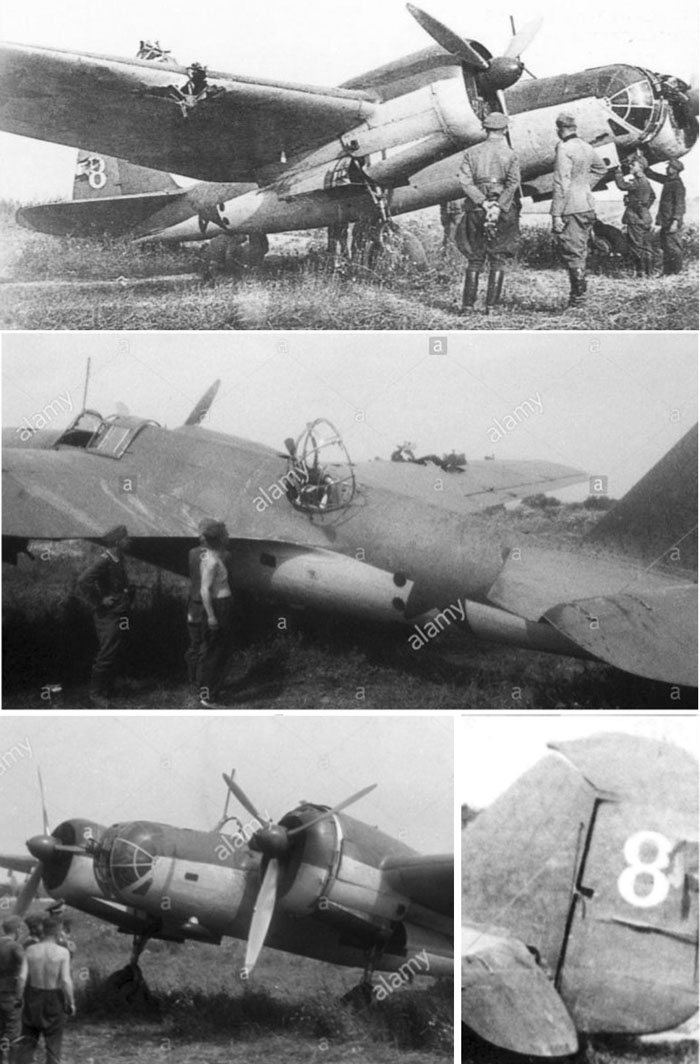
Plane 8 was equipped with M-100A or M-103 engines with flat cowling.
It was updated with a MV-3 turret with close skinning around it, radio mast and the grey/blue (or green/light grey) livery of 1940/41.
Note the unusually large size of the red star on the fuselage sides.
Whitish areas over the wing are likely due to the paint being altered for fuel leakages during refueling.
The spinners seem somewhat darker and more glossy than the cowlings, they could be painted red.
Below: profile and upper view of plane 8.
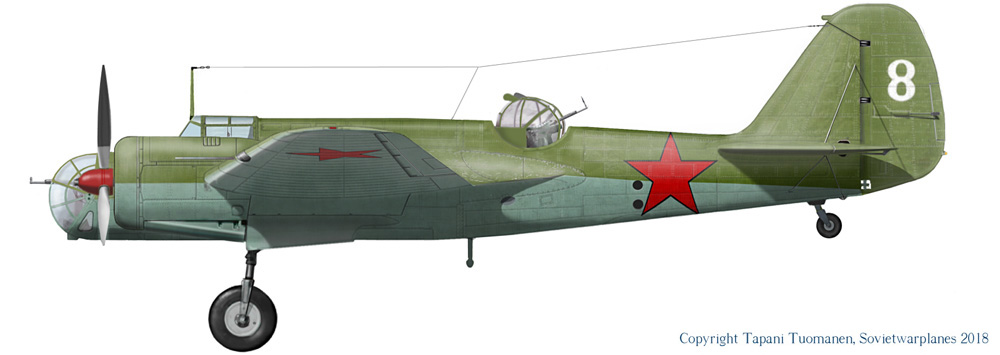
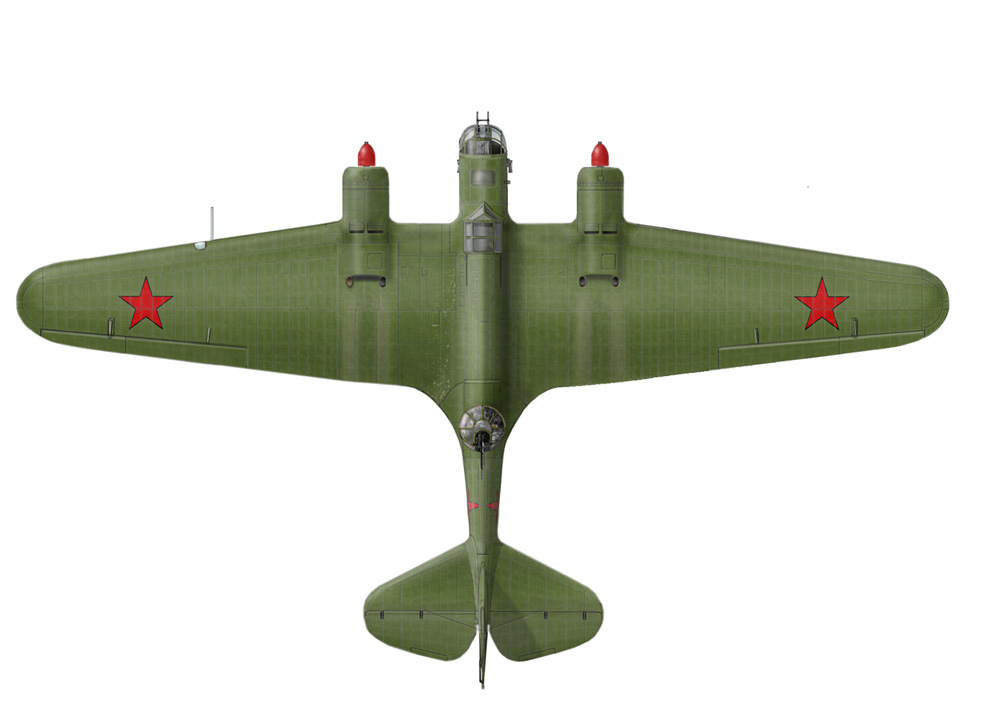
Red 1 inside yellow circle
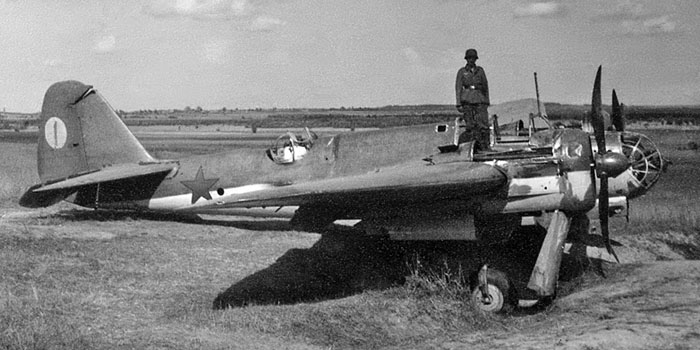
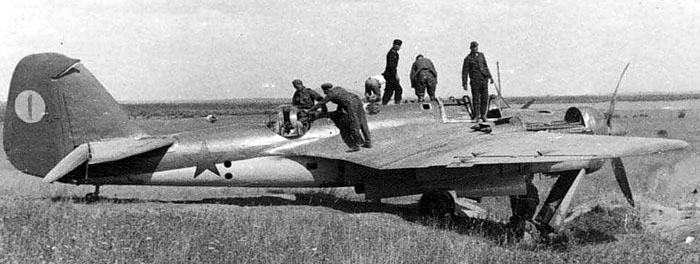
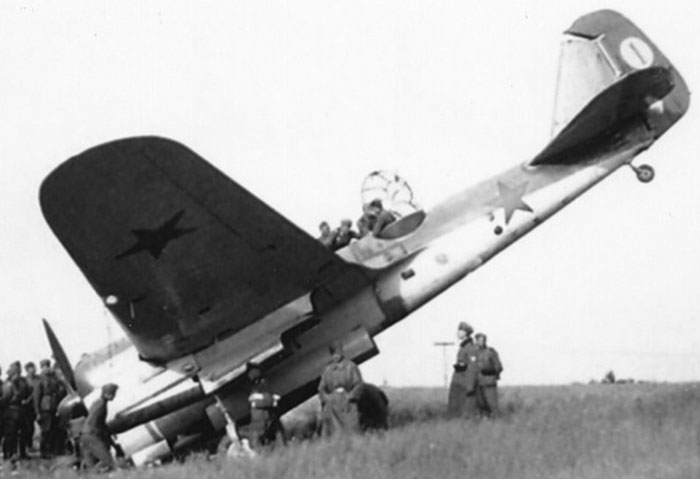
Aside:
photo of plane 'red 1' (?) , probably photographed on the Irkutsk Air Base.
This SB with frontal radiator and MV-3 turret, windscreen mounted antenna mast, looks a good example for the May 1940 scheme.
It's likely that the green painting, the antenna mast and the MV-3 turret are due to a refitting. The irregularity in the skinning in front of the turret seems to support this idea, and so the green area going unusually low under the tail. .
The prop blades appear painted in black, while the spinners seem painted in red.
The red (?) 1 on a round yellow (?) background is noteworthy, and probably indicates the squadron leader.
image by Piotr Biskupski

Black 2
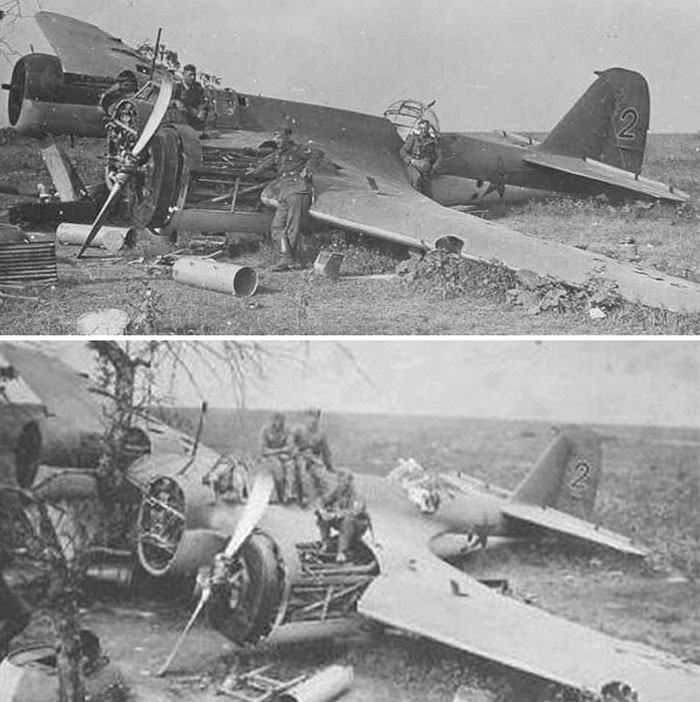
Plane 'black 2' shows a strange mix of archaic elements, as the 2-blades propellers that identify it as M-100 or M-100A engined, and recent updates as the MV-3 turret with closed skin around, the radio with the mast on the windshield and 1940-style green-blue livery.
A prominent characteristic is the black finish of the right upper half of the right engine cowling, perhaps due to a start of camouflaging that wasn't completed before the loss of the plane. The left cowling seems green as usual.
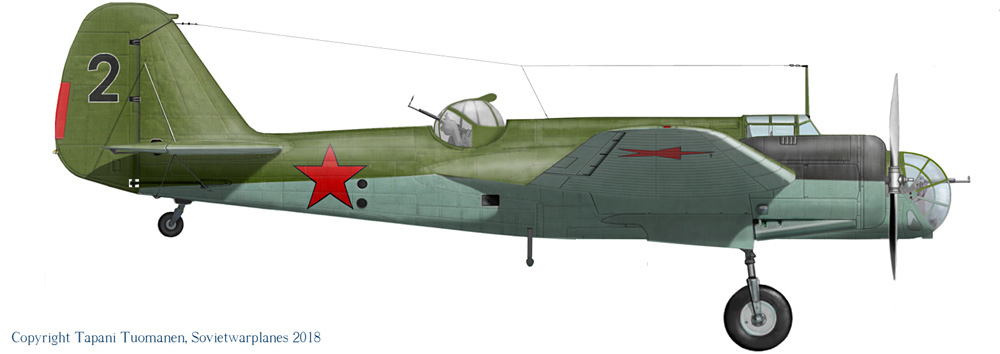
White 5 with white bands
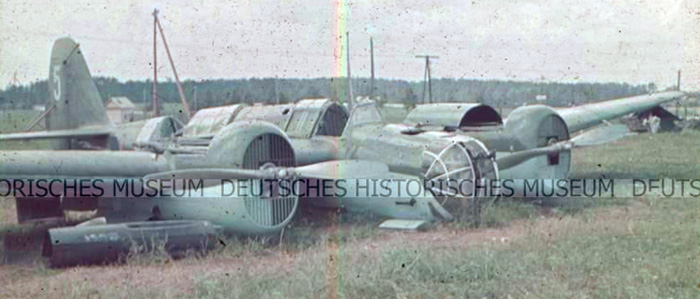
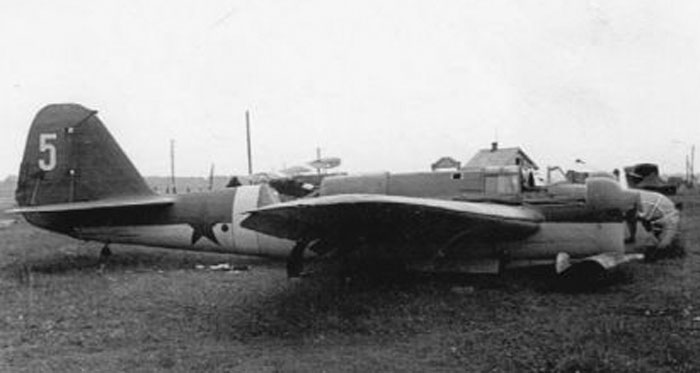
Some photos of white 5, an old SBM-100 with two blades propeller that was repainted in the green/blue livery.
The plane was left in Borisov air base, Belarus.
The prominent characteristic was the white band on the fuselage, with thin outlines of another color, possibly red. This could be related to some training unit.
The first image is a color photo, that allows to see that the shutters of the frontal cooler were painted green and blue as the outside of the plane.
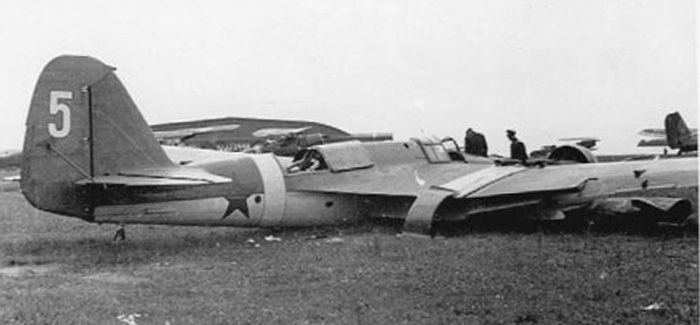
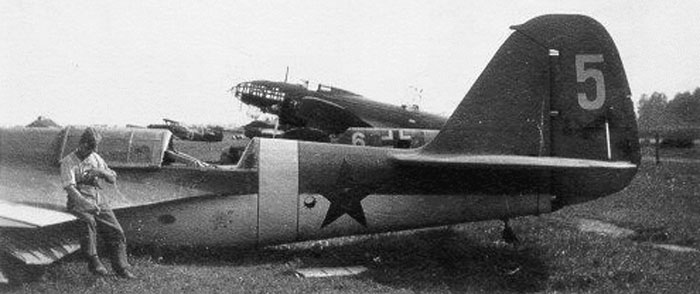
Aside:
two photos of SB white 5 from the rear.
The most interesting characteristic is the presence of a light area on the back of both wings, just behind the engines. The first idea was that it had to be considered as some removable cover, but its presence on both sides, the way it ends on the rear edge of the wing suggest that it was painted. Although, it looks strange that a white band was painted just behind the exhaust pipes.
The dark line close to it would be some slot between the inner part of the wings and the outer wing consoles. It is hard to say if these bands were contoured by some red fillet as the one on the fuselage.
These photos show clearly that the white number 5 on the rudder had a red outline too.
